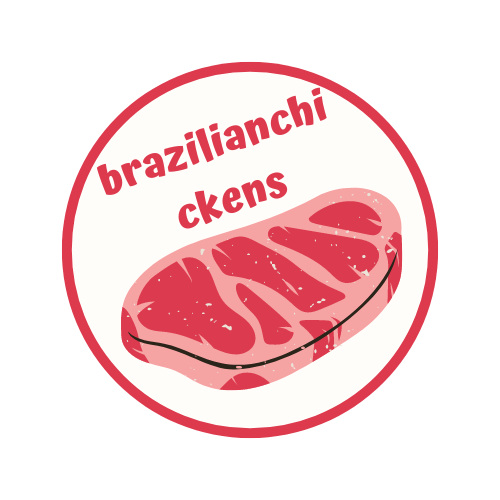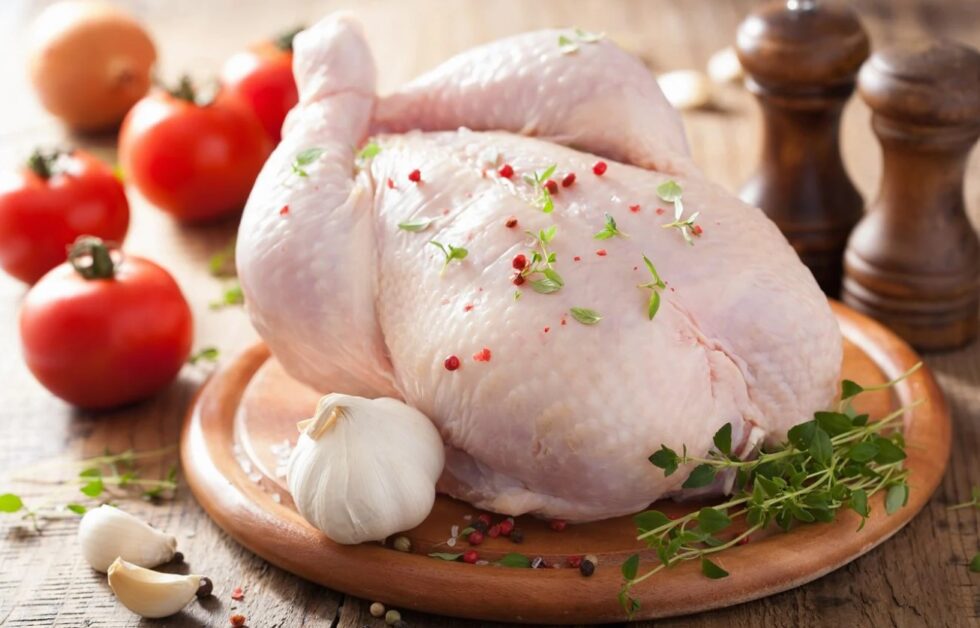The
The journey of frozen chicken from Brazilian exporters to your table is a complex process that involves multiple steps, from the farm to the freezer and ultimately to your plate. Here’s a detailed breakdown of the journey that frozen chicken takes as it travels from Brazil to international consumers:
1. Poultry Farming in Brazil: The Starting Point
The journey begins on the poultry farms of Brazil, which are spread across the country’s vast agricultural regions, particularly in states like Santa Catarina, Paraná, and São Paulo. Brazil’s favorable climate, ample feed resources (especially soybeans and corn), and established farming expertise make it an ideal location for large-scale poultry production. Here’s how the process starts:
- Raising the Chickens: Poultry farms raise chickens in large, bio-secure environments. The farms are designed to optimize conditions for fast growth while maintaining the health and safety of the birds. Chickens are typically raised for around 35–42 days before they are ready for processing.
- Animal Welfare and Health Checks: Brazilian poultry farms adhere to strict standards for animal welfare and health. The birds are regularly monitored for diseases, and vaccinations are provided to prevent outbreaks of poultry diseases like avian influenza or Newcastle disease. Veterinary inspections are crucial at this stage.
- Feed and Nutrition: The chickens are fed a diet based on corn and soybean meal, two crops that Brazil produces in abundance. The feed is designed to provide all the necessary nutrients to promote healthy growth and quality meat.
2. Processing: From Live Chicken to Frozen Product
Once the chickens reach maturity, they are sent to processing plants. Brazil is home to many state-of-the-art processing facilities that handle everything from slaughtering to freezing. The facilities are equipped to process large volumes of poultry efficiently while adhering to international food safety standards.
- Slaughtering and Preparation: The chickens are humanely slaughtered, and their carcasses are carefully cleaned and prepared for further processing. This includes removing feathers, eviscerating, and splitting the birds into different cuts (e.g., breasts, thighs, wings, or whole chicken).
- Quality Control and Inspections: After processing, the chickens undergo rigorous quality control inspections to ensure that they meet global food safety standards. Brazil’s poultry processing facilities are certified by organizations like HACCP (Hazard Analysis Critical Control Point), ISO, and USDA to ensure that all products meet stringent health and safety requirements. The chickens are also inspected by government and third-party agencies to ensure compliance with international regulations.
- Freezing and Packaging: The chicken is then flash frozen immediately after processing. Flash freezing ensures that the meat retains its moisture, flavor, and nutritional value, as it prevents the formation of large ice crystals that could damage the texture. The frozen chicken is then packaged, often in vacuum-sealed bags or cartons, for transport. This packaging helps preserve freshness during the journey to international markets.
3. Cold Chain Logistics: Ensuring Freshness During Transit
Once the chicken is frozen and packed, it’s ready for export. Maintaining the cold chain—a temperature-controlled supply chain—is crucial at this stage to ensure that the chicken remains safe and high-quality during its journey across international borders.
- Transport to Ports: The frozen chicken is transported by refrigerated trucks to major ports in Brazil, such as Santos, Paranaguá, and Itajaí. These ports are equipped with the necessary infrastructure for handling frozen goods, including cold storage facilities and refrigerated containers for shipping.
- Shipping: The chicken is then loaded into refrigerated containers (also known as reefers) that maintain a constant temperature of around -18°C (0°F) or lower to keep the product frozen during transit. These containers are designed to prevent any temperature fluctuations, ensuring that the chicken remains safe and fresh.
- Global Shipping Routes: Frozen chicken from Brazil is shipped to markets across the world, including China, Saudi Arabia, the EU, Japan, and the U.S. Shipping can take anywhere from 2 to 6 weeks, depending on the destination. The shipping time requires careful coordination to ensure that the frozen chicken arrives within the required temperature range and in optimal condition.
4. Customs and Import Procedures
When the frozen chicken arrives at the destination port, it undergoes the customs clearance process. Each country has its own regulations for importing frozen chicken, and the chicken must pass through customs inspections to ensure it meets the local food safety standards.
- Documentation: The exporter provides all necessary documentation, including certificates of origin, health and safety certifications (e.g., USDA, EFSA), and bill of lading to ensure that the shipment complies with international trade rules. If the chicken is halal or kosher certified, relevant documentation is also provided.
- Customs Inspection: In some cases, customs may inspect the shipment to ensure that the frozen chicken meets local standards. This includes checking the temperature of the product upon arrival and verifying that the proper certificates are in place.
- Tariffs and Import Fees: Importers must pay any applicable tariffs or import fees before the chicken can enter the local market. These fees vary depending on the destination country and any trade agreements in place.
5. Distribution and Storage in the Destination Country
Once the chicken clears customs, it is transported to local distribution centers or cold storage facilities. Here, the chicken is kept in refrigerated warehouses at the appropriate temperature until it is ready to be distributed to retailers or foodservice providers.
- Storage and Handling: The chicken is stored in temperature-controlled environments to maintain its frozen state until it is ready for sale or further distribution. Some suppliers use warehouse management systems to track inventory and ensure proper rotation (first-in, first-out) to prevent any product from sitting too long.
- Retail Distribution: From the distribution centers, frozen chicken is sent to supermarkets, wholesale distributors, or restaurants, where it is stored in freezers or chilled sections until it’s purchased by consumers.
6. Final Consumer: From Freezer to Table
Finally, the frozen chicken reaches the consumer, whether through retail grocery stores, restaurants, or foodservice operations.
- Thawing and Cooking: The consumer purchases the frozen chicken, typically in various cuts (such as breasts, thighs, wings, or whole birds), and brings it home. Before cooking, it is thawed in the refrigerator or using other safe thawing methods. The chicken is then prepared and cooked according to personal preference, whether roasted, grilled, fried, or used in various recipes.
- Meal Enjoyment: After cooking, the frozen chicken, which has maintained its quality and safety throughout its journey, becomes a tasty and nutritious part of the consumer’s meal.
7. Sustainability and Ethical Considerations
As consumers become increasingly aware of sustainability and ethical concerns in food production, Brazilian frozen chicken exporters are also focusing on these areas:
- Sustainable Farming Practices: Many Brazilian producers are investing in more sustainable farming practices, reducing water usage, and implementing energy-efficient processes to make poultry production more eco-friendly.
- Animal Welfare Standards: The Brazilian poultry industry is adopting international animal welfare standards, ensuring that chickens are raised in humane conditions with proper care, reducing the risk of disease and promoting healthier products.
Conclusion
The journey of frozen chicken from Brazil to your table is a carefully coordinated process involving numerous stages—starting with poultry farming in Brazil, followed by processing, freezing, shipping, customs clearance, storage, and distribution. Throughout this journey, various stakeholders work together to ensure that the chicken remains safe, high-quality, and affordable for consumers around the world. With Brazil’s vast agricultural resources, modern infrastructure, and commitment to food safety, Brazilian frozen chicken has become a staple in global markets, delivering value to consumers and businesses alike.

